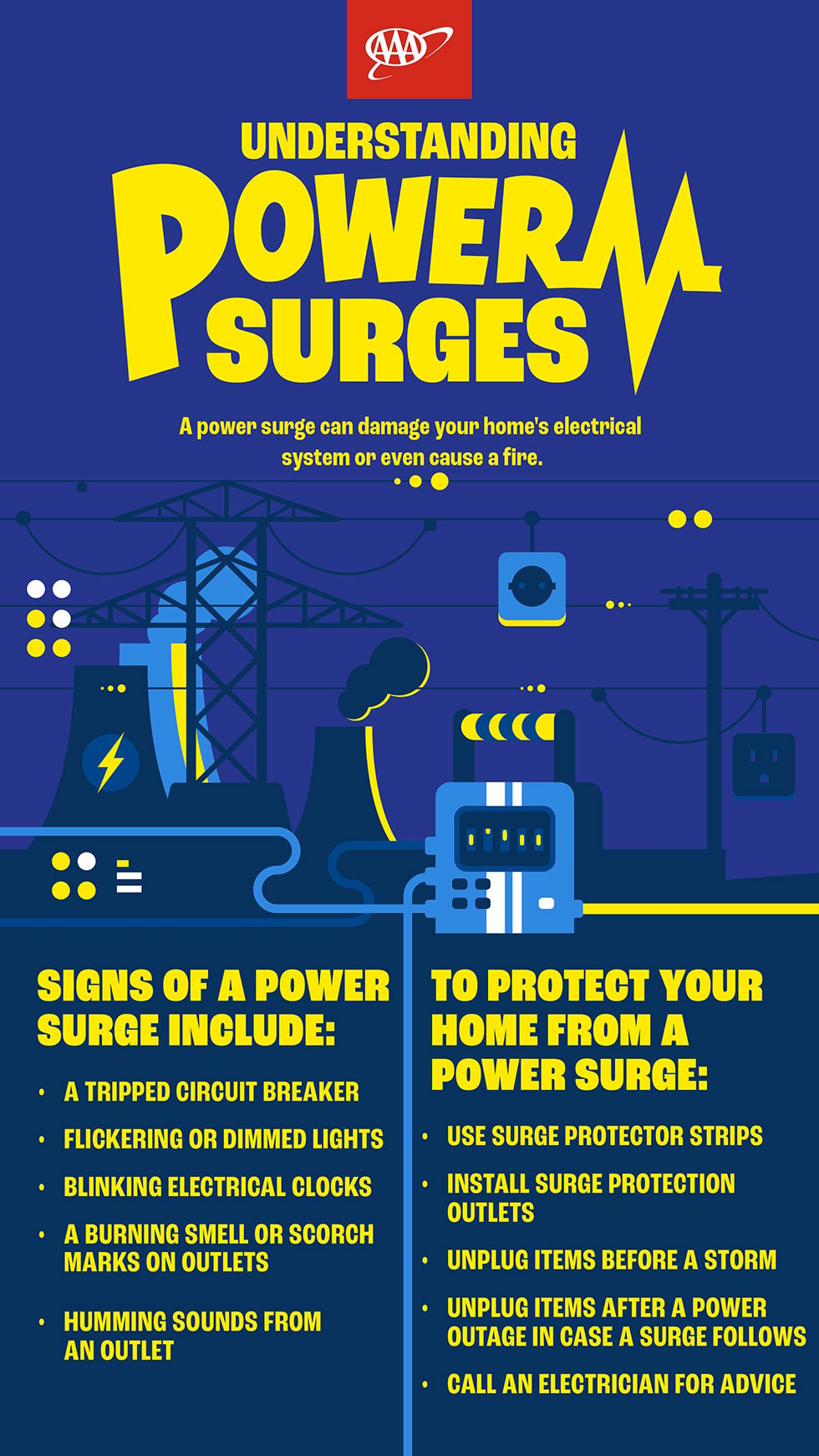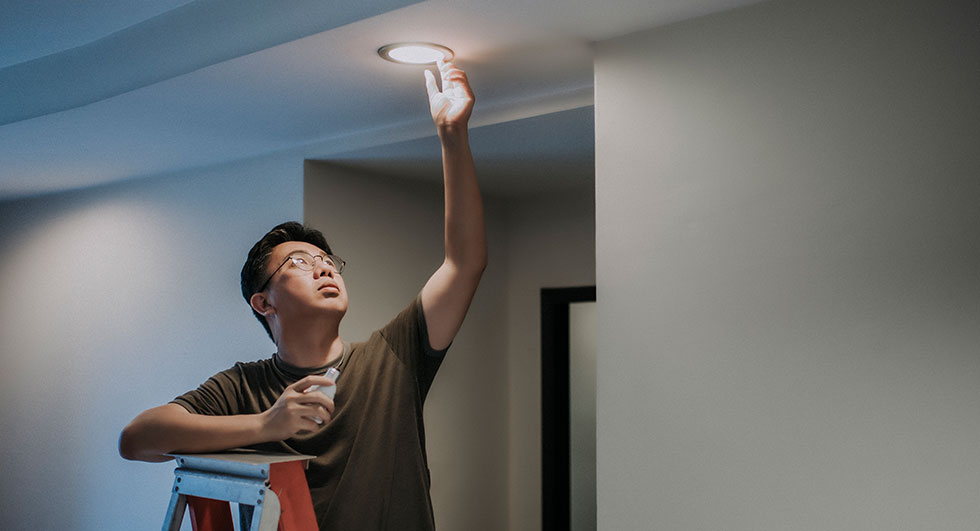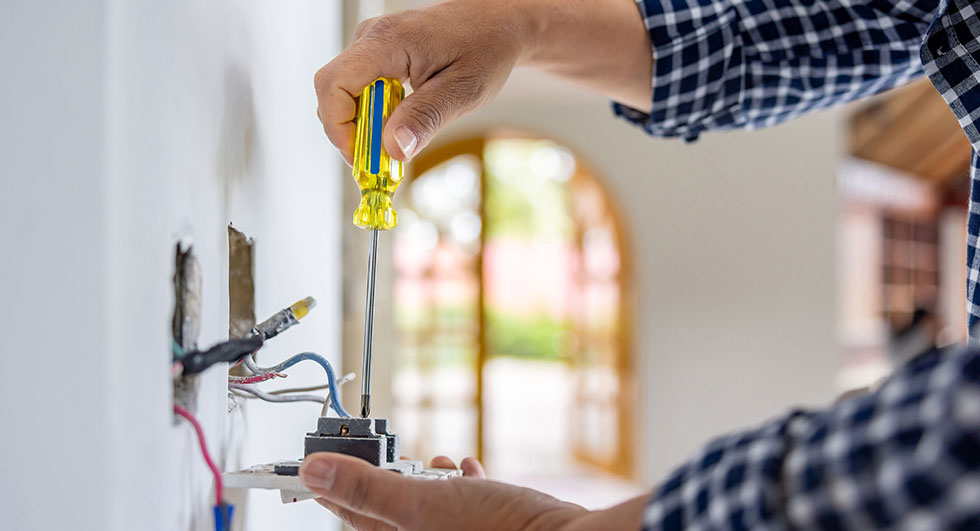What to Do When Your Home Experiences a Power Surge
Protect your electronic devices and household appliances by retrofitting your outlets, using power strips, unplugging, and more


Power surges are relatively rare and usually only last a fraction of a second, but they can do significant damage to electronic devices and household appliances, and even cause fires. Understanding what a power surge is, what causes them, how to identify one, and how to protect your home and belongings can help save you stress and money. Read on to learn more.

What is a power surge?
A power surge is a sudden surge or increase of electrical power that is higher than normal. Typical voltage levels for household appliances and electronics are between 110 – 220 volts, and when a power surge happens, increased volts are sent through your home’s wiring, overloading the system. Surges can be small or large, and the extent of damage caused can vary.
If your home experiences a power surge, it can damage anything plugged into the electrical system of your house, even if it’s not turned on. This can include electronics, appliances, and more. The damage may mean a costly repair bill or it can destroy the item altogether and, in some cases, a power surge can cause a fire or be harmful to people or animals in the area.

What causes a power surge?
A power surge can be caused in many ways, both internally and externally:
- Lightning: Should your home be struck by lightning, or lightning strikes power lines providing electricity to your house, it can send thousands of volts into your wiring.
- Power outage: If your home or neighborhood suffers a power outage, an electrical surge is likely to occur when power is restored. The sudden jump from zero to being back on can damage devices.
- Overloaded circuits: If you plug too many electronic devices into the same socket, which draws power from the same circuit, it can get overwhelmed and cause a huge voltage spike, potentially destroying those devices and possibly causing a fire.
- Old wiring: If you live in an older home or have wiring that wasn’t properly installed, you may experience power surges. If you see burn marks on outlets, smell burning, hear a buzz coming from outlets, or your circuit breaker frequently trips, your wiring may need updated or fixed.
- Power grid issues: Damage to transmission lines, issues with the grid, maintenance work being conducted, or even unusually high demand on power can cause a power surge (though this is rare).
Signs of a power surge
- Circuit breakers have tripped.
- Lights are flickering or dimmed.
- Electric clocks (such as on your stove or microwave) are blinking or show the wrong time.
- You smell a burning smell or see scorch marks on outlets.
- You hear humming coming from your outlets.
- Wall outlets with the reset button have moved to the reset position.

What to do if there is a power surge
If there is a power surge in your home, start by resetting, unplugging, and repowering all electronic devices. Do this before resetting your circuit breakers if a power outage occurred after the surge.
Then, assess your home for damages by inspecting appliances, electronics, and power outlets. Turn devices on and off, one at a time, to see if they are still functioning. Don’t forget to check your HVAC system for damage, which may require professional help to fix.
Finally, if you do have damage to your home or belongings, contact your insurance agent. Homeowners insurance may cover damage caused by a power surge, up to your policy’s limits. Whether or not the damage is covered may vary depending on what caused the surge and what was damaged, but checking with your agent can help you determine next steps.
Steps to take to avoid a power surge
There are a few things you can do to protect your home and belongings from damage from a power surge:
- Use surge protector strips: These special power strips have built-in protection against electrical surges.
- Install surge protection outlets: You may be able to retrofit your regular outlets with ones that have built-in protection for devices plugged into them.
- Unplug items before a storm: If there’s bad weather coming, unplug what you can. This can include TVs, computers, gaming systems, and even appliances like your microwave or dryer (if it can be done easily).
- Unplug if there’s an outage: If you do lose power in your home, disconnect everything you can that draws power. Power surges can happen when electricity is restored, so the fewer items plugged in when it comes back on, the better.
- Ask a professional: If you aren’t sure if your home needs more protection or requires updates to protect against power surges, have a professional electrician come in and take a look.
